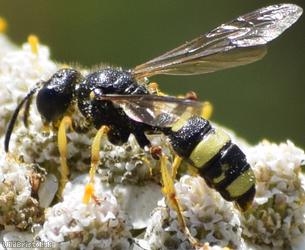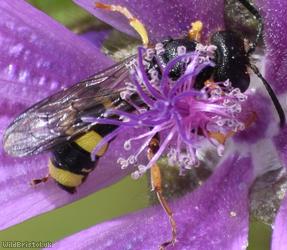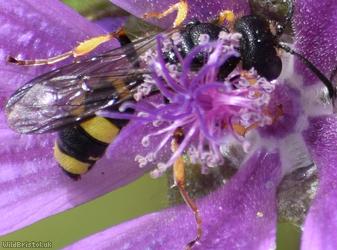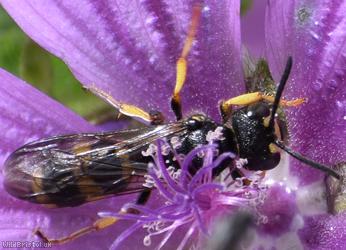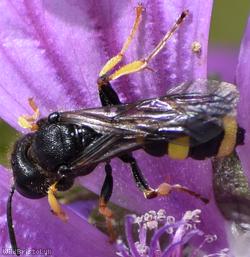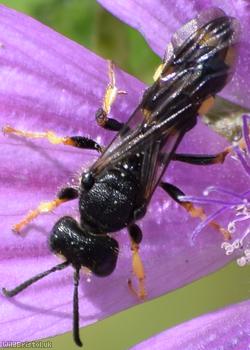Ornate Tailed Digger Wasp - Cerceris rybyensis
Favourite Photos
Species Description
Widespread and locally common in the South. Habitat includes: Sunny sites with well-drained soil and a good supply of flowers and prey items such as banks, coasts, cliffs, dunes, chalk grassland, wasteland, gardens, parks, allotments, churchyards etc. Life story: Commonly associated with sandy soils, both on the coast and inland, and often nests in aggregations together with C. arenaria (Weevil Wolf). It also inhabits chalk grassland and places with heavier soils. Females prey on small and medium-sized (usually pollen-laden) bees of various genera, which are paralysed by stinging. The neck is also squeezed between the wasp's mandibles (malaxation); causing the prey to die around two days later. She stuffs 5 to 8 prey items into each cell, depending on prey size. The nest consists of a deep (10-15 cm) burrow, from which short lateral tunnels branch off and terminate into single cells. The upper section being more or less vertical, the lower more horizontal. The mature larvae spin tough, silken cocoons in which they overwinter. Diet: Nectar from Common Hogweed (Heracleum sphondylium), Wild Carrot (Daucus carota), Jersey Thrift (Armeria arenaria), Marigold (Calendula sp.), Yarrow (Achillea millefolium), Creeping thistle (Cirsium arvense). To add to the list I've recorded Common Mallow (Malva sylvestris). Flight period: Late June to Early September. Length: Females = 8 - 12 mm, Males = 6 - 10 mm.
